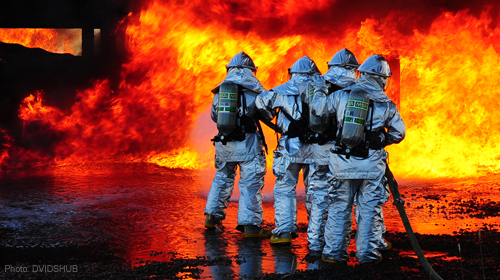
Last week, we filed a friend-of-the court brief in support of Aimee Greene, a firefighter who faced discrimination and harassment while working in the Buckeye Valley Fire District in Arizona. Despite having college degrees in firefighting, thousands of hours of firefighting experience, and consistently positive job evaluations, Aimee was denied a promotion to captain. In fact, when it became known within the firehouse that a woman wanted to be a captain, Aimee's male coworkers turned on her, calling her abusive names, telling her she had no "right" to seek promotion, and making her do training drills alone while the others watched and mocked her. Aimee was told that her place was in the kitchen, not on a fire truck.
As shocking as Aimee's experience is, it is commonplace among women in the fire service and other traditionally male occupations. Even after legal reforms in the 1970s required the gender and racial integration of firehouses, change came slowly, especially because officials of the U.S. Department of Justice – which enforces civil rights laws – actually believed that women were physically incapable of being firefighters. The DOJ came around eventually, but even today, women continue to be kept out of firehouses through means like subjective hiring and promotional systems that provide a cover for discrimination, as well as physical ability tests that favor brute strength and speed but don't really measure the skills firefighters use every day. Women are also kept out – or driven out – of the firehouse by a slew of other forms of discrimination ranging from hazing and ostracism to physical and sexual assault. As a result, the proportion of women in the fire service is tiny – estimates range from two to four percent.
Much of this exclusion and abuse is driven by stereotypes, including the belief that women are physically or mentally frail, but also by outdated ideas about what firefighters actually do. The increase in fire-resistant buildings and the use of smoke detectors, as well as the transfer by many cities of emergency medical services to the fire department, mean that most of what firefighters do every day is to help and transport people who are sick or injured, and undertake routine tasks like fire safety inspections and investigations. In short, the stereotype of the beefy fireman battling an inferno doesn't match up with fire service work in the 21st century, and would-be firefighters – like Aimee Greene – shouldn't have to fit that image.
Have you been discriminated against? Tell us your story.
Learn more about employment discrimination and other civil liberty issues: Sign up for breaking news alerts, follow us on Twitter, and like us on Facebook.

